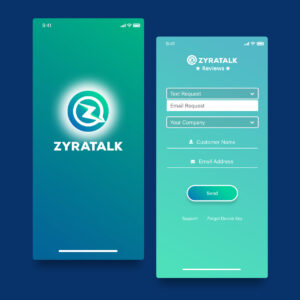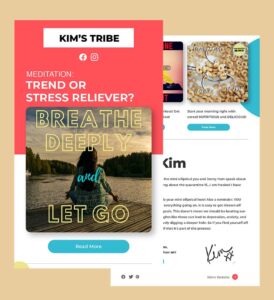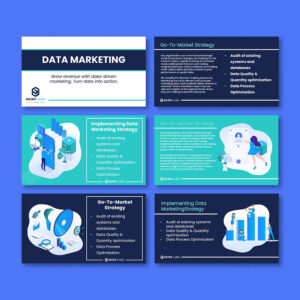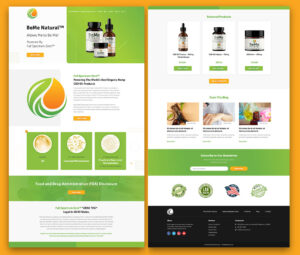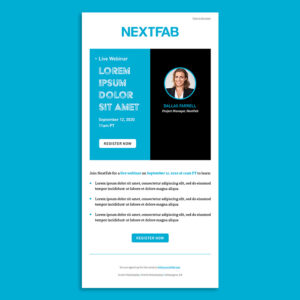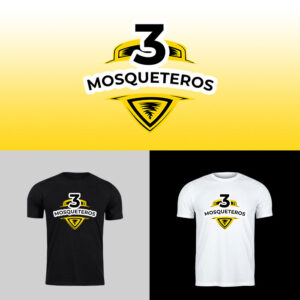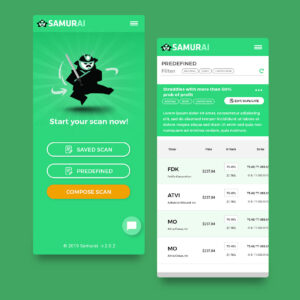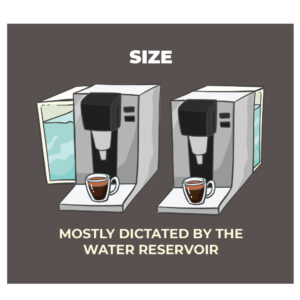
It used to be that a well-crafted ecommerce website design is a luxury, commonly seen in big brands. In today’s fiercely competitive world, it’s a necessity that every business, big or small, must have. Here’s a step-by-step guide, plus tips that can help you boost your biz through an efficient ecommerce design.
Table of Contents
- Choose the Right Ecommerce Platform
- Develop Your Brand Strategy
- Design your Ecommerce Website
- Create Your Product Pages
- Set Up Payments and Checkout
- Set Up Shipping and Delivery
- Test and Launch Your Ecommerce Design
- Market and Promote Your Ecommerce Website
- Why Partner with Penji?
Choose the Right Ecommerce Platform
The first step when designing your own ecommerce website is finding the right platform to build it on. This is the foundation of your website and will be the engine that powers it. From here, you will handle all your business processes, like product listings, payments, inventory management, and storage of your customer data.
Below are two of the options available:
- Self-Hosted Platform: This is where you have complete control and flexibility over your ecommerce website design. However, you’ll need technical know-how to set it up, maintain, and secure it.
- Hosted Ecommerce Platform: This user-friendly option gives you all-in-one solutions in handling many of its technical aspects. It offers a variety of features and will ask for a monthly subscription fee.
To find which one would suit your business, consider the following key factors:
- Mobile-Friendliness: Make sure your chosen platform has a responsive design or a mobile app for a seamless customer experience.
- Reliability: To make your store available 24/7, select a platform with a proven track of uptime and reliability.
- Security: You need a platform that will help you secure your customers’ data. Select the one with robust security measures, such as SSL certificates and PCI compliance.
- Back-Office Tools: For the smooth operation of your ecommerce website, go with the platform that offers inventory management, order fulfillment, and customer relationship management (CRM) tools.
Develop Your Brand Strategy
Your brand is the lifeblood of your business. It’s what sets you apart from the competition and resonates with your target market. If you haven’t developed your branding strategy yet, here’s how you can do it:
Always be Consistent: Avoid confusing your target audience with varying logos, colors, and fonts. Maintain consistency across all your platforms: website, marketing materials, social media, and packaging. Make sure these use the same brand voice to build trust and recognition.
Understanding Your Audience: Know who you are trying to reach. Know your audience’s demographics, interests, and online behavior. Understand their pain points, preferences, and how your brand can solve their problems. Knowing all these will help you craft a brand message that resonates with them.
Domain Name Selection: Your domain name is your brand’s internet address. If you haven’t one yet, choose a name that is:
- Easy to Spell: Avoid hyphens, numbers, and complicated spellings.
- Memorable: Simplicity will help your customers easily find and remember you.
- Brand-Reflective: Your domain name should mirror your brand name or keywords relevant to your products or services.
- Availability: Before setting your sights on a domain name, check for its availability.
Design your Ecommerce Website
Once done with your platform selection and brand strategy, it’s now time to design your ecommerce website. Here are two key design considerations you need to think over:
- Theme Selection: Almost all ecommerce platforms have pre-designed themes from which you can choose. Select the one that aligns with your brand identity while offering the functionalities you need. Most of these are customizable, letting you adjust the colors, layouts, and typography to make the design uniquely yours.
- Color Psychology: Colors have the power to evoke emotions and influence buying decisions. You can familiarize yourself with basic color theory to help you choose the best color palette for your website.
Create Your Product Pages
Your product pages have to be visually appealing, informative, and persuasive. Here are a few best practices to follow:
- Use High-Quality Images and Videos: Use high-resolution photos to add professionalism to your website. Add pictures from different angles to clearly show your products’ features. Make your videos engaging to get their attention and stay longer on the site.
- Write Compelling Product Descriptions: Don’t just describe your products, take time to craft them carefully and enticingly. Weave storytelling elements to capture attention. Use clear and concise language to show how your brand solves your customers’ problems.
- Focus on User Experience: Organize your pages logically. Ensure that all the information is easy to find. Furthermore, incorporate customer reviews and feedback to build trust and social proof.
Set Up Payments and Checkout
Make your checkout a smooth and quick process. Offer varying payment options such as credit and debit cards and digital wallets (PayPal, Apple Pay). Partner with a secure payment gateway to simplify integration and ensure all transactions are safe and secure. More importantly, make the checkout process user-friendly.
Set Up Shipping and Delivery
It’s now time to set up your shipping and delivery. This is crucial as a positive delivery experience can convert first-timers into loyal customers. Offer a variety of shipping and delivery options. Consider standard, expedited, and overnight options. You can also offer unique choices like local pickup or subscription box deliveries.
Test and Launch Your Ecommerce Design
Before you open your ecommerce website design to the world, check the following:
- Functionality: test all its features: product search, shopping cart, navigation, payment gateways, and checkout process.
- Performance: Test its loading speed on different browsers and internet connections.
- Mobile Responsiveness: Check if your ecommerce design displays flawlessly on different devices.
- Security: Verify secure checkout with proper encryption and data protection measures.
Market and Promote Your Ecommerce Website
Once your ecommerce website design is live, market and promote it. These are the two most crucial marketing strategies that drive sales and boost traffic:
SEO (Search Engine Optimization): This is where you optimize your ecommerce website design with content and product pages that have relevant keywords. This improves search engine ranking and organic traffic.
Social Media Marketing: Build a solid online presence on social media. This is where most consumers hang out, so make sure you are there for them to see. Share engaging and valuable content to build awareness and widen your reach.
These are only but two of the key strategies you need to do. There are more to explore: email marketing, influencer partnerships, and content marketing, among others.
Why Partner with Penji?
Running an ecommerce business can take up much of your time and energy. This how to create an ecommerce website design guide can help ease the burden of tackling a time-consuming and laborious task. However, if you want to make life easier and your website look better, work with Penji.
Our talented designers have the chops to craft beautiful web designs and many other visual assets a business will ever need. Watch our quick demo video here or click this link to get them started.
About the author

Celeste Zosimo
Celeste is a former traditional animator and now an SEO content writer specializing in graphic design and marketing topics. When she's not writing or ranking her articles, she's being bossed around by her cat and two dogs.








